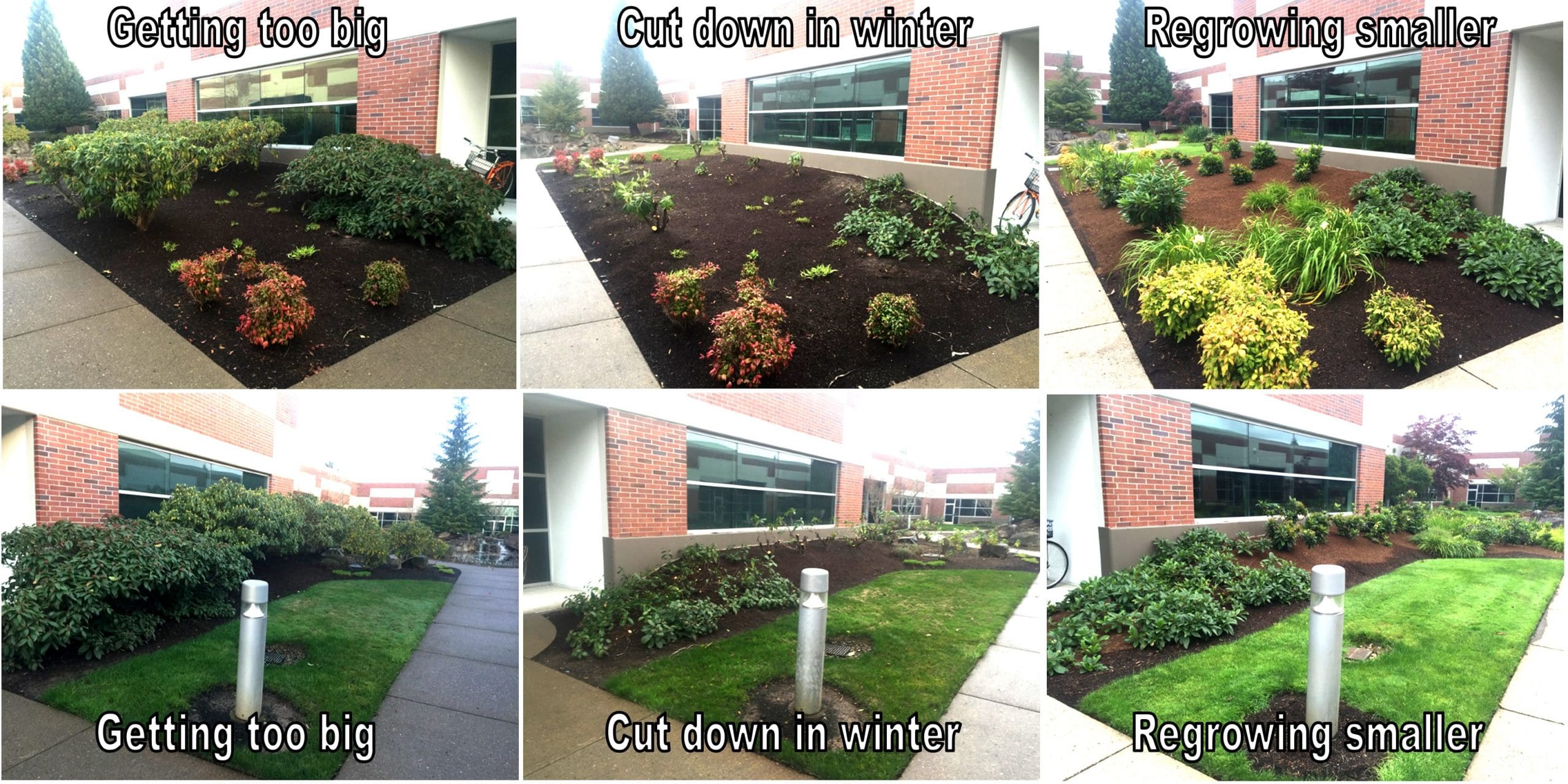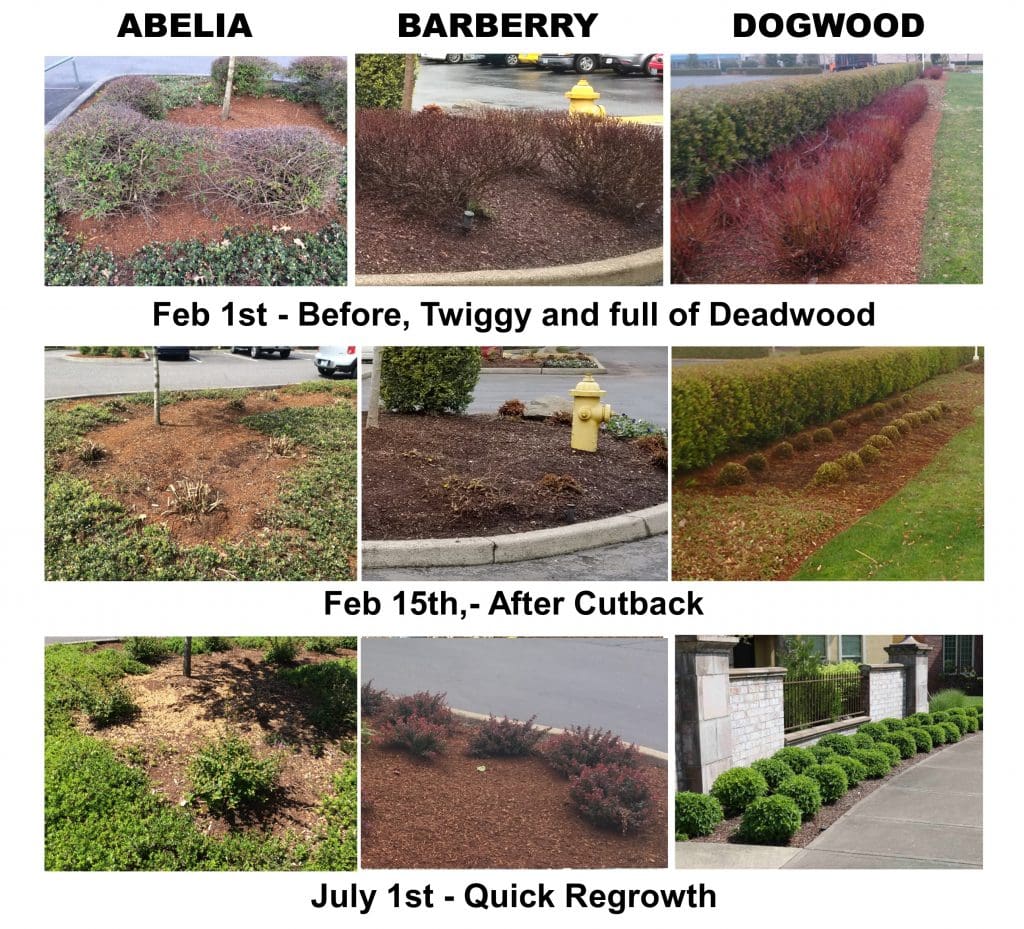
Many landscape shrubs grow larger than the location where they are planted. When these shrubs get out of hand, it is best to conduct rejuvenation pruning to bring them back to an appropriate size.
Regular pruning to keep a plant at an acceptable height can cause shrubs to get twiggy and ugly.
“To correct this, we recommend rejuvenation pruning to bring them back into size,” says Bob Grover, LIC, president of Pacific Landscape Management, based in Portland, Oregon. “Sometimes this can be achieved by thinning pruning, but sometimes they need to be cut down to the ground and allowed to regrow at a shorter height and more naturally.”
If you opt to conduct rejuvenation pruning, communication with clients is critical. The cutback will appear drastic.

“You absolutely have to educate clients as rejuvenation pruning looks like you’ve killed the plant,” Grover says. “If a customer understands the process, they will be accepting, if you surprise them and cut their plant back down to stumps, they will invariably get upset.”
As the plants grow back, they will look much better throughout the season.
Deciduous plants respond well to rejuvenation pruning while most conifers will not regrow after rejuvenation pruning. Some shrubs will need to be cut back like this annually. Others only need to be cut down to the ground every two to three years.
Barberry, abelia, spirea and dogwood are some of the shrubs that need to be trimmed annually. Deciduous plants like hydrangea, euonymus, and forsythia only need to be cut back every two to three years.
Timing is one of the most critical aspects of getting rejuvenation pruning right.
“We do this pruning in the winter and early spring to capture the spring growth flush to have the plant quickly regrow,” Grover says. “If rejuvenation occurs after the spring growth flush, the plant sometimes does not have enough energy to regrow or is very slow in regrowing.”
After cutting back the shrub, make sure it receives extra care as heavy pruning is stressful for the plant.


